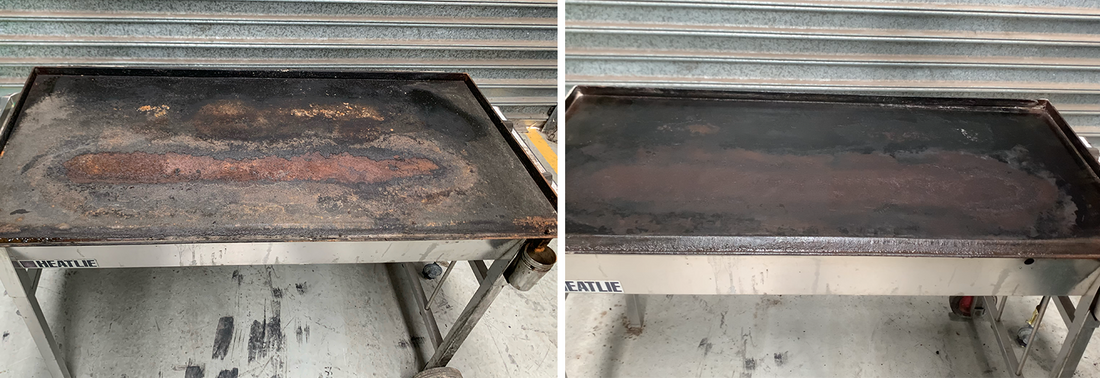
Restoring your Rusty BBQ Plate
Has your BBQ seen better days? Covered in rust and other unpleasantries? Most people would think to take a trip to the dump or throw it up on Gumtree for a quick penny. You may be surprised however that most, if not all BBQs, no matter the state they're in, are salvageable and can return to their former glory. All it takes is a bit of elbow grease, a couple of handy tools and some hot soapy water and you'll have your plate looking nearly new again.
Check out the video above for a comprehensive guide to restoring your BBQ in 7 steps.
1. Get scraping
The first part is the hardest, but also the most satisfying. You'll want to get yourself a good quality scraper, one that's durable enough to break through tough, baked-on layers of fat, oil and rust. A decent scraping tool is relatively inexpensive and truly worth its weight in gold. We recommend a paint scraper from a hardware store.
Start scraping from the edge of the exposed plate as you see in the video. The rusted, deteriorated layers of steel will be tough but eventually will lift off. The layers of fat and oil will generally be on the back and the sides and will be easy to get under. Scrape as much as you possibly can, there's no limit to how much you can take off.
2. Remove all the debris from the plate
Remove all the excess scrapings from the plate, making sure to dispose of them in the rubbish.
3. Wash with hot, soapy water
Get yourself some hot, soapy water and a dishcloth and pour some over the plate. Give it a good wipe down to clean the plate.
4. Scrub with scouring pad
After a quick wash with a cloth, get yourself a non scratch scourer and begin to scrub the soapy water over the plate to further clean it. You can use scourers that you would find at the supermarket, however, they may not last long. Heatlie recommends its Cleaning Kit which features 5 heavy-duty, no scratch scouring pads and a handy wooden handle as you see being used in the video.
5. Continue to scrape
At this point, you may or may not notice that you need to scrape more layers off as in step 1. If needed, go ahead. As mentioned earlier, there's no limit to how much you can scrape.
6. Drain dirty water
After some comprehensive scrubbing and scraping, you'll want to drain off all the dirty water and any remaining debris into the fat hole for easy removal. Get yourself a bucket or container to catch it all (the usual fat catcher won't be big enough) and dispose of it into a rubbish bin. Avoid pouring this stuff down the sink as the debris might clog your drains.
Note: You may find that you need to repeat steps 3 to 6 to get a thorough enough clean before you season the barbecue.
7. Coat in oil
Once you've removed all water and debris, wipe it down with a dry cloth. Now it's time to coat the plate in oil to season the steel. You can use any kind of oil you'd like, we are using canola spray in the video. Give the plate a thorough spray and use a dry scouring pad to rub it in. Repeat this several times to coat the plate in a thick layer of oil. This will help to protect it from rusting in the future.
Finishing it off
All that's left to do is heat the burners on high for 2 minutes to season the plate and wipe off any excess oil that may be left hanging around.
There you have it! Depending on the state of your BBQ, it may not look brand new again, but it will certainly be serviceable and at the very least you'll be able to fire it up for a cook.
Heatlie's are built to last with high-quality materials and as long as you regularly maintain, clean and protect yours from the elements, you will get several decades out of it. However, if you find that yours is truly unrepairable, you can always drop into your nearest Heatlie stockist, give us a call, or visit our head office and we'll be happy to assist you in finding your next BBQ to last you a lifetime. You can even check out our current range of BBQs, Outdoor Kitchens and Accessories to suit your needs, and make your purchase online.
Check out these pics of a before and after plate restoration. Anything is possible!


